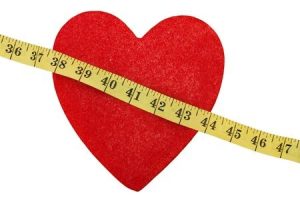Mind is the Master power that moulds and makes,
And Man is Mind, and evermore he takes
The tool of Thought, and, shaping what he wills,
Brings forth a thousand joys, a thousand ills: —
He thinks in secret, and it comes to pass:
Environment is but his looking-glass.
“As a Man Thinketh” by James Allen
We become what we see in our minds. ‘That image’ that is embedded deep in our subconscious is what we become, whether we are aware of it or not. Images are powerful. Since the days of antiquity, the Hebrew and Greek cultures were filled with so-called “graven image.” Today, as our world has changed, so have our images. We have become tenderized to the impact images have on our lives. Our televisions and computer screens are high definitions; social media allow us to gather content by just looking at a picture; health and wellness, for some, is about getting that sexy “bod” that we can capture with our cell phones then post for the entire world to see. Which brings me to my point. When we think about health and wellness, we all have an image in mind. What is that image you see? How do you see yourself?
Becoming Aware of Who We Are
These are critical questions because they affect our well-being. The way we perceive ourselves determines how we feel. If we like the way we look, we would feel good about ourselves. If we see ourselves as successful, then we may feel good about ourselves. But what happens if something changes? If we become less attractive due to a sickness or we lose our jobs? Then our self-esteem and self-worth are flushed down the toilet. Look at the flack Carrie Fisher, the actress, who reprised her role as Leia Organa, the intergalactic revolutionary princess turned general in “Star Wars: The Force Awakens,” received as a result of aging—a natural human process. Ms. Fisher, who has battled addiction, weight gain and mental illness, responded by saying via Twitter, “Youth and beauty are not accomplishments, and added that they’re the temporary byproducts of time and DNA.” She is absolutely right. Our self-worth cannot be based on what we accomplish or on our appearance. Nothing in this life is permanent. Our worth needs to be grounded on the essence or the make-up of our being, and that is spiritual. God is spirit, and we are created in His likeness.
Knowing Who We Are
If we are created in God’s image, then we are also spiritual beings. According to the biblical narrative of Adam and Eve, we are like God in terms of attributes. We, too, possess the ability to create like our Creator. But through the Fall of humanity, we have lost or forgotten who we truly are as God’s children. Instead, we have replaced our Creator with images of other human beings or things. Perhaps our graven image is to attain a particular physique. I know it was for me when I was competing in bodybuilding competitions. I remember battling, struggling—trying to find that space for God when all I could see was “I.” I had become my own graven image. And in seeing only myself, I saw only my flaws and shortcomings. I was not big enough; I was too small to be a bodybuilder, I thought. This is what happens when we create an image of likeness that is not God. We become self-conscious, imprisoned by the image. We are not good enough. That thing or person becomes our master, and we become subservient to it because our emotions tell us: If our emotions are right and good, then they make us healthy. If they are toxic and wrong, then they make us sick eventually. Sometimes, we do not realize the damage they have done to us until we find ourselves stuck in the mud of addiction or some mental illness.
Why A Faith-Based Health and Wellness Study
As people of faith our approach to health and wellness needs to be different from the general populace. If not, we risk worshipping the creature rather than the Creator. It’s easy for us to lose sight of God when we are focusing on our imperfections. We have to address our imperfections, but within the context of God. If not, our vision becomes more distorted, leading to further feelings of dissatisfaction and inadequacies. As Johnny Diaz, Christian pop artist, sings in his song, he can only say he is good enough within God: “Through the thunder and lightning/ You hold me close/ You have always been enough/ So I can say I’m enough.” The only perfect image is God, and we, as a part of his creation like all of his other creations, must point to him. Even in my attainment for bodily perfection as a bodybuilder, I came to this realization: I was “fearfully and wonderfully made because I was God’s creation. The Psalmist David said it well: “Thank you for making me so wonderfully complex! Your workmanship is marvelous—how well I know it” (Psalm 139: 4).
We don’t have to dullen our shine or play small for God to be seen. Does the butterfly hide its beauty or the flower that blooms? No. Nature shows God’s glory in being whom God created it to be, and, as a result, it points to the beauty and magnificence of God. There are three lessons we can take from David’s example:
1. We are beautifully created by God.
2. We should be thankful to the Creator for the way he created us.
3. Self-acceptance must come before true transformation and not the other way around.
Conclusion
When we include God in the health and wellness of our being, we have a more complete or whole picture. For it is our image of ourselves which is faulty and can only be corrected when we return God to his proper place as the mirror in which we see ourselves.
Email us today for more information on The Ten Commandments for Living a Healthy and Fit Life.









